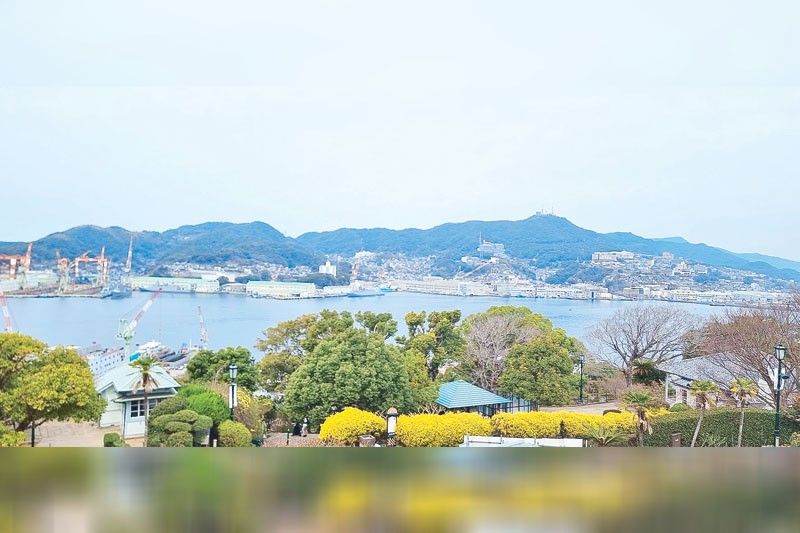Five Japanese cities in five days

I tagged along when Philippine Airlines (PAL) took a group of high sales-producing travel agents called “TravelingBFFsPH” to Japan. Aside from being real friends, they are a non-formal alliance of travel industry professionals who support each other and several advocacies. During the pandemic, the group was busy collaborating with the Tourism Promotions Board, Department of Tourism, and some airlines on how to help domestic tourism start slowly by organizing different familiarization trips to help different local destinations recover. Eventually they worked with international carriers to promote newly opened destinations, most recently Japan.
Philippine Airlines flew the group to Fukuoka accompanied by AVP for passenger sales Marissa Dimaano for this familiarization trip. Though we didn’t stay long at the birthplace of tonkotsu ramen, Fukuoka proved to be a great jumping point to several Japanese cities. From there we went straight to Nagasaki, one of the two cities hit by the atomic bomb during World War 2. The Nagasaki Peace Park, next to the Peace Memorial Hall, commemorates the bombing of the city and serves as a reminder that this should never happen again. Glover Garden is another place to visit. The Glover residence is Japan’s oldest wooden Western-style house and is part of the UNESCO World Heritage list. The gardens have a great view of the Nagasaki port, which supposedly inspired Giacomo Puccini to write his famous opera, Madama Butterfly. This was the sole port used to trade with the Portuguese and Dutch since the 16th century, and as a result, sugar became a popular commodity. The famous cake Castella was born there and is still popular today.
An American base is present in Sasebo, which explains the popularity of burgers and steaks. The steak has the Japanese touch of having lemon-and-onion sauce, that’s why lemon steak is a must-try. Also nearby is Kujukushima, which translates to 99 islands. A cruise around the 208 small islands proved to be a treat as we spotted pearl farmers and locals fishing. The boat trip ended at the Kujukushima Pearl Resort where I was mesmerized by several jellyfish aquariums. Huis Ten Bosch is a theme park that recreates the Netherlands. Named after one of the three official residences of the Dutch royal family, the park reflects the historical relations between the Netherlands and Japan when a trading post was opened in 1609. One really gets the Holland vibe with the stunning gardens filled with multicolored tulips.
The most exciting part of the trip was the Gifu Prefecture. My companions had all been there before but it was my first time. The old town of Takayama is frozen in time and has been beautifully preserved with many of the streets of houses and buildings dating back to the Edo Period (1603-1868). The city was a wealthy merchant town and Sannomachi Street had many homes, shops, cafés, and sake breweries, some of which have been in business for centuries.

A must-see is the well-preserved Takayama Jinya that was the government headquarters for the Hida Province under the Tokugawa Shogunate from 1692 to 1871. Hida is very well known for its beef called Hida gyu. Be sure to try this brand of kuroge wagyu or Japanese black beef bred in Central Japan’s Gifu Prefecture. The black-haired cattle are raised for at least 14 months and this breed has thinner muscle fibers so it has beautiful marbling even on the flank and shoulder cuts. Also in Gifu is the quaint Shirakawa-go, a UNESCO World Heritage Site known for the highest number of gassho zukuri (gassho meaning “hands in prayer”) houses located in one area. Some of these houses that resemble praying hands are over 250 years old and their unique thatched roofs are made to withstand heavy snowfall.
We then headed to our last stop: Nagoya to visit Nagoya Castle, built in 1612. It has the largest floor space of any tower keep in Japan, and was the first castle to be designated as a National Treasure. Dining and shopping kept us busy before catching our flight back to Manila. At the Nagoya Airport, we met the friendliest PAL junior customer sales representative in the Central Japan International Airport Office, Ayumi Tatematsu, who I thought was pure Japanese. It turned out that she was half-Japanese and half-Filipino. Although she lives in Japan, her spoken Filipino is impeccable because of all her Filipino friends in Japan.
It was a short and hectic trip but it gave the travel agents, including myself, an idea of what places are worth seeing and what sights are best suited for the Filipino traveler traveling within the areas of Fukuoka and Nagoya. I’m surely going back soon with my choice of places nearby these two convenient Japanese destinations.

* * *
Philippine Airlines flies daily from Manila to Fukuoka and Nagoya. Bookings may be made through PAL website www.philippineairlines.com or through any of their ticket offices or talk to their agents through our hotlines: (+632) 8539-0000 / (+632) 8855-8888 or Philippine Mobile – (+63) 919-056-2255 or Messenger: https://bit.ly/PALMessenger or Viber: Search for Philippine Airlines or WhatsApp: Add us as a new contact (+63) 998-951-4359 or myPAL Web Chat: https://bit.ly/PAL-Web-Chat.
Follow me on Instagram @pepperteehankee.
- Latest





























